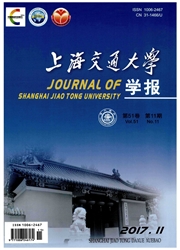

 中文摘要:
中文摘要:
通过面元法计算螺旋桨尾流场,根据螺旋桨尾流场对扭曲舵各剖面的几何攻角进行设计,提出了抗空化扭曲舵的设计方法;采用计算流体动力学方法评价舵的水动力性能,并经过拖曳水池的舵力测量试验加以验证.结果表明,在不同的航速和舵角条件下,与普通舵相比,扭曲舵的负压力系数峰值明显较小,从而大幅提高了舵的抗空化性能,降低了舵的空化剥蚀和由舵产生空泡所引起的振动噪声.由于扭曲舵与螺旋桨的尾流匹配良好,在舵角为0°时,扭曲舵叶背的压力系数分布与叶面的压力系数分布基本重合,因而显著减小了直航时舵上的横向力和舵轴力矩,有利于舵和舵机的受力.
 英文摘要:
英文摘要:
The propeller wake is calculated by a surface panel method, and then the attack angle of the twisted rudder can be designed through the propeller wake. An approach of anti-cavitation twisted rudder is proposed. The hydrodynamic performance of rudder after propeller is calculated by a computational fluid dynamics (CFD) method, and it is validated by the rudder force tests. The pressure distributions of the twisted and ordinary rudders are compared with each other. The peak of negative pressure on the twisted rudder is smaller than that of the ordinary rudder. The twisted rudder has a better anti-cavitation perform- ance and can reduce cavitation erosion, vibration and noise. Because the twisted rudder has better match performance for the propeller wake than the ordinary rudder, it has lower cross force and torque than the ordinary rudder when the rudder angle is zero. The fact is favorable to rudder and steering engine.
 同期刊论文项目
同期刊论文项目
 同项目期刊论文
同项目期刊论文
 期刊信息
期刊信息
